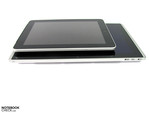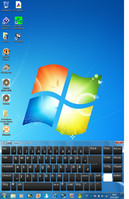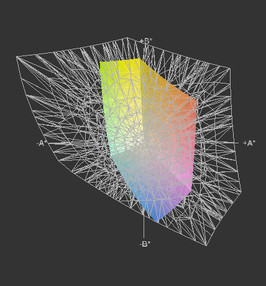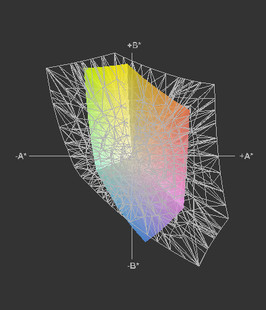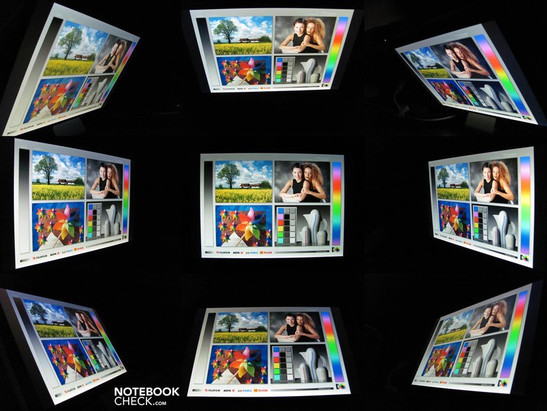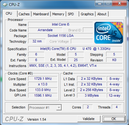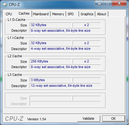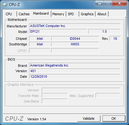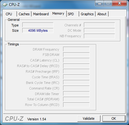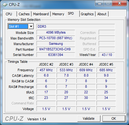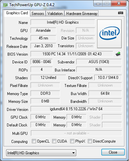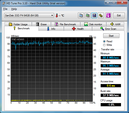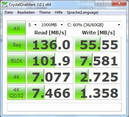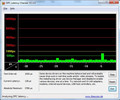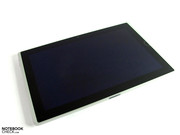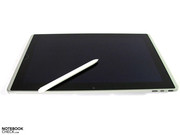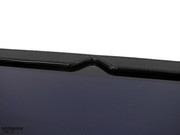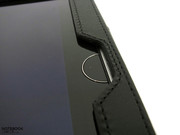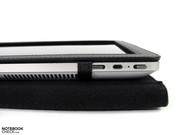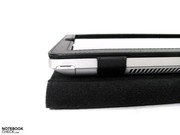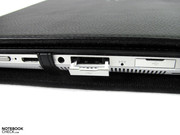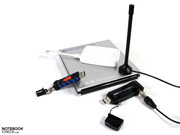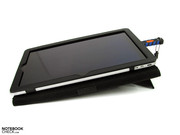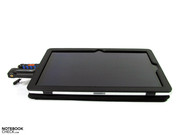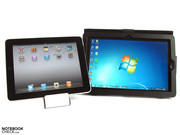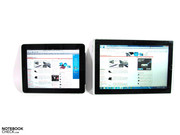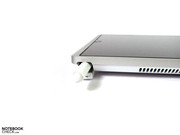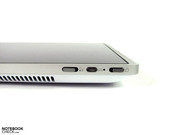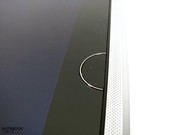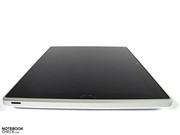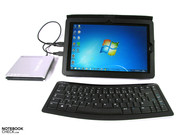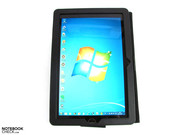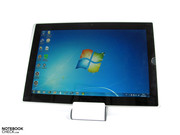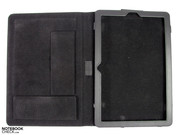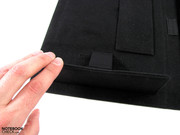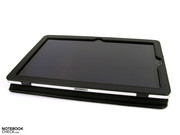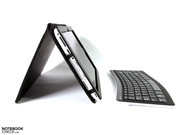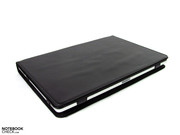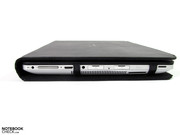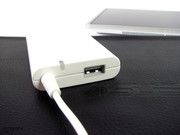Review Asus Eee Slate EP121 Tablet/MID

Tablets are currently being sold like hotcakes. Apple has revived an almost forgotten sector with its iPad and has developed a product that many thought impossible at the time. The iPad 2 has now been available for a few days and has caused big crowds in some places. While many manufacturers attempt to catch up to the best of the class, Apple can lay back and relax due to the incredibly high demand. The completion is partly going different ways in order to still get a piece of the cake. Everything can be found, starting with cheap products up to iPad imitations.
Asus dares a completely different solution with the Eee Slate. Just alone the price of 1000 euros is a whole new ball game and is doubtlessly to be located in the premium league. But Asus not only offers something unusual in terms of price. Not a Cortex-derivative is used as the CPU but rather a strong Intel Core i5-470UM, including incorporated graphics. Another highlight is the 12" touchscreen with a resolution of 1280x800 pixels, a 64 GB SSD, a 4 GB RAM and a healthy selection of interfaces. The bundle is completed with Windows 7 Home Premium 64bit as the operating system. It bids a very high compatibility and doesn't require a system change.
Case
The Eee Slate's case looks very robust and is manufactured well. The materials all make a high quality impression and have been selected suitable for use. That it doesn't always have to be aluminum is proved by the case's stability. A high torsional stiffness is even accomplished in the plastic flipside. Nothing can be depressed here. The structured material has a good grip and also feels good. However, the looks are rather more average than premium. We couldn't determine any creaking noises or irregular gaps in the test device.
The control elements placed on the edges are, alike the aluminum frame, made of metal and give it an attractive outer appearance. They can also be used well and provide an agreeable feedback. We didn't like the plastic USB covers as much. They are very fiddly and difficult to remove.
In comparison to conventional tablets, the Eee Slate's drawbacks are especially the weight and size. It doesn't have quite as good mobility qualities as the iPad, Samsung Galaxy and co. have with 1.15 kg and 312x207x17mm. Nevertheless, it is naturally very compact and light in comparison to similarly equipped, full-fledged (sub) notebooks.
Asus hasn't only included the unremarkable, black imitation leather, protective cover for on the go. It protects the Slate against outer influences and additionally bids a prop. The material can't be compared with genuine leather, but it looks good and makes a resistant impression. Asus has obviously tried to keep all control elements accessible even when the device is in the cover. With exception of the display's direction lock, since was partly covered, this has been successful.
Connectivity
The installed interfaces provide a good assortment. The extensive functions allow mini HDMI, 2 USB 2.0s, a cardreader, WLAN, Bluetooth 3.0, a webcam and a combined audio port cover the most important fields. Unfortunately, there is no built-in UMTS modem! This would have to be realized with a stick, which is possible due to USB. This (compromise) solution isn't practical, though. However, there are no limits for other expansions thanks to Windows and USB. External hard disks, DVB-T sticks, cameras, memory sticks, printers and many more can be used easily. There's no need to fear the restrictions of Android or of the IOS. The programs and drivers that you use in Windows 7 can be easily used on the Slate. No App Store, no restrictions, no second operating system that you have to get used to.
The determined transfer rate via USB 2.0 is 24.7 MB/s. Although this rate is below average in comparison to full-fledged notebooks, it is very impressive for a tablet. The cardreader supplies the standard 16.8 MB/s (SD card). The connections are all on the left, whereas we find the large gap between the USB ports pleasing. Thus, both ports can be used with even broader USB sticks at the same time, without them covering adjacent connection. On the other hand, the gap isn't large enough for devices with a Y cable, for example external DVD drives. TVs and external monitors can be digitally addressed via mini HDMI.
Supplies / Warranty
A Bluetooth keyboard is included in the scope of delivery, as well as 2 AAA batteries, a stylus, a cleaning cloth and a protective leather imitation cover. In regards to software, there are many Asus tools and Microsoft's Office Starter 2010 edition. It's praiseworthy that an operating system recovery DVD has been included. However, you'll have to supply a matching drive. If you don't have a problem with placing your data in other hands, you can use the free 500 GB online memory via Asus' Webstorage for one year. As usual for Asus, the warranty period is 24 months. Extension packages aren't yet known or listed.
Input Devices
Keyboard
The external Bluetooth keyboard has a curved layout, which is supposed to be particularly ergonomic. The key size is good, the stroke is rather soft and the stroke noise is very subtle. The layout complies with the usual standards and isn't arcane. Unfortunately, the model we received didn't rest evenly on the work surface. It teetered slightly. The battery cover on the bottom was also noticed adversely. It occasionally did what it wanted and simply fell off. The keyboard is supplied with the aforementioned two triple A batteries. There are small buttons for Bluetooth and power supply beside the cover.
Finger Control
Commands can be entered with one or more fingers, as known from many touchpads. Rotating, zooming and clicking are only a few of the functions that you'll quickly integrate in your workflow. With a bit of practice, you'll navigate very precisely and move windows around. The good balance of display surface and resolution, which comes very close to that of the iPad with 124.7 dpi, is shown here. Typos hardly ever are made and can also be reduced to a minimum by changing the content size. If desired, you can disable finger inputting.
Stylus Control
The stylus is viable for particularly accurate actions. It can occasionally happen that we tap the wrong object with our thick fingers, especially in long file lists. This works better with the pen and its crosshair icon. Sketching, drawing and even handwritten notes are tasks that you will mainly manage with the stylus. The pen has a very high accuracy and doesn't need to hide in face of convertibles, such as Dell's XT2 or HP`s 2740p. We even only determined marginal deviations at the edges, less than 1mm. With a quiet hand it was even possible to do a bit of cropping work. Sketching, provided there is talent, is also no problem. Window 7's handwriting detection is capable of learning and allows inserting handwritten notes Word or Open Office documents easily.
Utility
If you're familiar with Windows 7, you'll not have any problems with the basic procedures of use. You can work as you normally do, but not with a mouse or touchpad, but directly on the display with your fingers or with the stylus. Naturally, the control isn't as intuitive and simple as on the iPad. The specially aligned OS has clear advantages for finger controls in this case. On the other hand, you have a vast amount of functions with Windows 7. A bit of practice is necessary in order to work smoothly with context menus, selection masks and markings. For example, how is the right mouse key's functions enabled? However, after a bit of use, you'll find yourself repeatedly wanting to tap around on other displays without multi-touch functions.
Display
The screen used in the Slate measures 12.1 inches diagonally and has a resolution of 1280x800 pixels in an almost outdated 16:10 format. In our opinion, the aspect ratio isn't so bad since you have a few extra lines vertically than in the current standard format of 1366x768 pixels. Consequently, the user also basically has a considerably larger desktop available in comparison to other tablets. For example, the iPad only has 1024x768, Samsung's Galaxy Tab and Toshiba's Folio have 1024x600 and the ZiiO smartphone has the usual 800x480 pixels. The dot density is 124.7 dpi and thus bids a good ratio of desktop surface and content size. The accuracy can also be increased when the content size is enlarged in Windows' system control. Some icons and symbols aren't really made for tablet use in their 100% size.
| |||||||||||||||||||||||||
Brightness Distribution: 83 %
Center on Battery: 244 cd/m²
Contrast: 703:1 (Black: 0.37 cd/m²)
The smooth display surface reflects intensely and causes overlays in unfavorable light conditions. The brighter the ambient light, the darker the actual contents and the stronger this effect appears. However, it's not such a major problem indoors since you can choose your seating position flexibly while holding the tablet. As far as we know, tablets with a matt surface don't yet exist. Even the competition is only available with this display surface type. But that's about the only significant drawback in regards to the display. You can live with the fact that a tablet doesn't have a particularly large color spectrum (about 50% of sRGB) and can hardly be blamed for that – even if it does have a few feasible qualities for image editing and graphic tasks.
The maximum brightness in mains use is a good 289 cd/m2. Together with the other 8 measuring points, the test device has an average of 266 cd/m2 and can serve with an illumination of 83%. The brightness differences are at most visible in one-colored backgrounds.
The brightness is sufficient for working pleasantly outdoors on cloudy days. The brighter the surrounding's light gets, the less you can see the displayed content. Hardly anything is visible in direct sunlight. Moreover, you'll have to cope with the reflections that are even more intense outdoors and overlay the actual picture. This is even worsened by the limited backlight of 244 cd/m2 in battery mode.
Nevertheless, the Slate's screen bids an above average contrast ratio of 703:1 and is only beaten marginally by the iPad. This is especially beneficial for pictures, videos and games that can serve with vivid colors and a deep black. The Toshiba Folio, Archos 101 or Creative ZiiO can't keep up with the display qualities not only in this point.
The viewing angle stability is also on par with the iPad. The contents are always well recognizable on both the vertical and the horizontal plane. Bleaching or inverting, as usual in notebook screens, can't be determined here. Merely a slight color and brightness difference turn up at larger viewing angles.
Performance
The usual notebook technology, in the form of Intel's HM55 chipset, creates the basis of the performance sector. The installed Core i5-470UM processor belongs to the Ultra Low Voltage CPUs and can excel with an especially low thermal design power of 18 watts, including the graphics chip. In addition, the CPU offers a lot of current state of the art technology. The base rate of 1.33 GHz can be increased up to 1.86 GHz thanks to Turbo Boost. The Hyper Threading technology ensures that two virtual cores are available in addition to both physical cores. Thus, up to 4 threads can be processed at the same time. As it is usual in the Core family, the memory controller is also incorporated here. 4 GB of DDR3 800 RAM are available. Since this has been implemented as one module in one slot, the system has to manage with one memory channel.
As mentioned, the Intel HD graphics unit is also in the CPU casing. It also has a variable clock rate. The Intel HD Graphics covers a range of 166 MHz up to 500 MHz depending on the task.
In terms of performance, the Eee Slate pockets all tablets, netbooks and even a few subnotebooks that we have previously reviewed. The test model achieved 1689 points in 3DMark06's CPU score, wPrime 1024m is calculated in 1076s and, 3936 points (32bit) and 4947 points (64bit) are achieved in Cinebench R10. For example, converting our test songs from MP3 to AAC with iTunes is accomplished in a 21.3 fold speed.
The graphics sector achieves 1210 points in Cinebench R10 shading (32bit) and 1165 points (64bit). It reaches 1120 points in 3DMark06 with a resolution of 1280x800. Thus, the performance in the CPU field is on par with an Intel Pentium T4200 or AMD AMD Athlon II P340 CPU. In the graphics field, it reaches the level of an Nvidia ION 2 graphics in netbooks. FullHD videos are rendered without problems and the graphics even has enough power reserves for almost all tasks. It finds its limits especially in 3D heavy tasks.
Please see our detailed benchmark charts for more information about the CPU and GPU performance.
We checked to what extent connected peripherals could suffer from latency problems with the DPC Latency Checker. The rates all exemplarily stayed within the green field and don't give reason to expect any restrictions at first. This is however only true as long as the Bluetooth keyboard isn't used. DPC gave warning as soon as something was entered and recorded rates of over 2000 µs, deep into the red field. In this case, you'll have to reckon with sound crackling or synchronization errors.
| PCMark Vantage Result | 4414 points | |
Help | ||
Routine work is accomplished very fast on the Slate. We didn't notice any lags in response, dropouts or other performance cave-ins. Browser, word processing, image editing, video chats and music converting were all tasks that didn't cause the tablet problems. The PCMark Vantage benchmark, which tests just these tasks among others, is finished with 4414 points. Mainly the RAM seems to be preventing an even better score. It stays behind the potential with 800 MHz and without dual channel support, and with a partial score of 2282 points.
| 3DMark 05 Standard | 1927 points | |
| 3DMark 06 1280x800 Score | 1120 points | |
Help | ||
The mass memory installed in the Asus comes from Sandisk and has a gross capacity of 64 GB. The solid state drive definitely doesn't belong to the strongest modules, but it nevertheless has a significant share in the subjective speed. With an access rate of 0.6 ms, programs start very fast and inputs are quickly accepted. The transfer speeds, for example, are 90 MB/s (read) and even over 130 MB/s in sequential read. It beats the majority of conventional hard disks with that. Sandisk hits the brake and only delivers 55 MB/s (sequential) in write.
Gaming Verdict
Actually, the Eee Slate isn't at all suitable for gaming. There are only few games for tablets in Windows. In particular, the iPad has a tremendous lead here. Nevertheless, "normal" games can be played in desktop mode with the keyboard and mouse. We tested a few tracks that match the device's performance. World of Warcraft and Sims 3 can still be played very comfortably with a reduced resolution and low quality settings. It doesn't look as good for StarCraft 2 and Anno. Basically, you can also play these games, but they will only run craggily with filled cards and many units.
| low | med. | high | ultra | |
|---|---|---|---|---|
| World of Warcraft (2005) | 98 | 36 | ||
| Sims 3 (2009) | 89 | 34 | ||
| Anno 1404 (2009) | 26 | |||
| StarCraft 2 (2010) | 27.9 |
Emissions
System Noise
The high computing performance is not possible without having an impact on the noise development. Despite the energy saving components and SSD, the hardware squeezed into such little room has to be cooled. The fan activity basically stays within a pleasant range of 31.4 dB(A) to 34.2 dB(A), though. The quiet noise doesn't emit any high pitches and usually remains in the background. These rates are naturally remote from those of the silent iPad. But in comparison to netbooks or convertibles, the Eee Slate belongs to the quiet devices.
Noise level
| Idle |
| 31.4 / 31.4 / 31.7 dB(A) |
| Load |
| 32.2 / 34.2 dB(A) |
 | ||
30 dB silent 40 dB(A) audible 50 dB(A) loud |
||
min: | ||
Temperature
We could only drive the case surface temperature to a maximum of 32.7°C. That is a good rate which doesn't give reason for worry. Temperatures of more than 25°C will hardly be the case in normal use.
(+) The maximum temperature on the upper side is 28.7 °C / 84 F, compared to the average of 33.7 °C / 93 F, ranging from 20.7 to 53.2 °C for the class Tablet.
(+) The bottom heats up to a maximum of 32.7 °C / 91 F, compared to the average of 33.2 °C / 92 F
(+) In idle usage, the average temperature for the upper side is 21.3 °C / 70 F, compared to the device average of 30 °C / 86 F.
Speakers
The little speakers naturally can't create a sound miracle. Nevertheless, they are fully sufficient for a bit of background music, internet videos or video chats. The sound quality is very treble-heavy. The output is distorted in high volume ranges. For upgrading the sound, you can use external USB or Bluetooth speakers, headsets, headphones, etc., like in other notebooks.
Battery Life
Just the basis doesn't give much hope. A small 34 Wh lithium polymer battery is supposed to take care of mobile mains independency. Although you have an additional 9 Wh available in comparison to the iPad (25 watts), you also have considerably power hungrier components installed. The Slate is clearly on par with the subnotebook division, in view of 7.6 watts minimum and 29 watts maximum. ARM based tablets only need about 3 watts, everything included.
| Off / Standby | |
| Idle | |
| Load |
|
Key:
min: | |
The determined battery runtimes can only turn out disappointingly considering the above mentioned conditions. We reached a runtime of 231 min with the BatteryEater Reader's Test (maximum possible battery life, minimum brightness, all wireless modules off, energy savings mode) and thus only slightly missed the manufacturer's specification (4.5 h). At least you have useable display brightness for darker interiors available in this scenario. You can surf in battery mode for almost 3 hours in maximum brightness before you have to go back to the mains. The battery lasts for a bit more than 2 hours watching movies. We could at least still reach 1.5 hours in the BatteryEater Classic Test (minimum battery life in high performance profile and maximum display brightness, all wireless modules on). Especially, the reduced maximum display brightness in battery mode apparently causes a slightly increased battery runtime than the rates measured at the mains had indicated.
Verdict
Asus has designed a great device with the Eee Slate. Operating system, display and connectivity open many possibilities. It's even imaginable to occasionally use the tablet PC as a desktop replacement.
In any case, the system performance is sufficient for many tasks and outshines everything that other tablets currently have to offer. Windows 7 can be used very efficiently, FullHD videos are rendered smoothly and even gaming is possible with restrictions.
The flipside of the coin is the comparatively high power consumption that limits the maximum battery life to a bit over 4 hours. Additionally, there is the tablets high weight and the large dimensions that oppose mobility. In return, the system noise is present, but is usually on a very restrained level and thus stays discreetly in the background.
The connectivity is basically good, but suffers under the omission of a 3G modem and the extremely stiff USB port.
Beyond that, the Eee Slate's display is awesome due to its size and high resolution. Even controlling via fingers and stylus works well and the especially the latter option opens additional application fields.
The vast amount of application fields is ultimately also made possible by Windows 7 that is used as the operating system. The entire bandwidth of programs and peripherals are available and don't leave anything to be desired.
Initial listed prices are currently around 999 euros. However, no retailer has these devices in store yet. Therefore, we will have to wait and see how the street prices will develop at availability.




